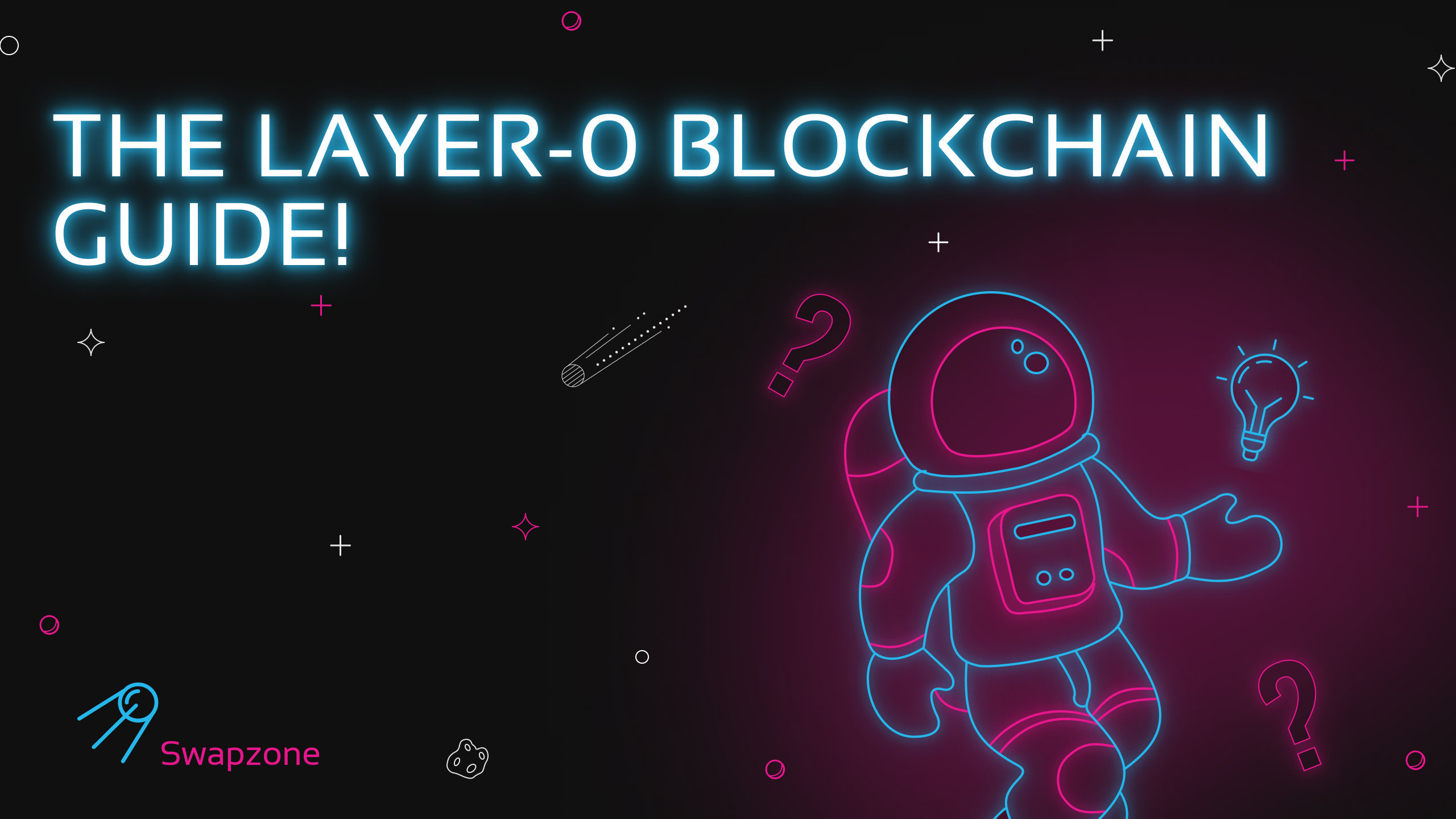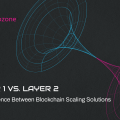Some topics and terms in the digital money industry can be quite complicated for beginners. Ordinary people who often use cryptocurrency do not even suspect what labor-intensive and well-coordinated processes take place when buying/selling cryptocurrency, transferring a token from one blockchain to another. There are several layers of protocols for such purposes.
You may have heard about Layer-0 on forums about cryptocurrency or from your friends who are advanced users. However, it is very difficult to understand in detail on your own what L0 is and what it is for in general. In this article you can learn key concepts about Layer-0, information about how it works in real life, and see examples.
What is Layer-0 and How Does It Work?
By its nature and purpose, blockchain technology offers advantages such as decentralization, transparency, and, of course, immutability. However, more widely used blockchains such as Bitcoin and Ethereum still have fundamental problems with scalability due to low rates of transactions and high fees. This is where solutions such as Layer-0 blockchains come into the picture to bring changes into the equation.
- The Layer 0 is the basic level of the blockchain architecture which provides the foundational services that are essential to the Layer-1 blockchain networks.
Actually, the L0 is the infrastructure layer that provides an integrated connection of various blockchains. It facilitates the seamless interoperability of one chain with another or from one chain to multiple chains. Layer-0 is not a blockchain but a relay between different chains that connects them.
Layer-0 solutions employ synchronous messaging and distributed reasoning to synchronously connect blockchains. When a transaction requires crossing to another chain, L0 protocols encapsulate the data and transaction logic. This enables the messaging in two networks to occur at different times and the two networks to be compatible. Layer-0 platforms leverage innovations like:
- Ones that involve relaying and passing of messages with a view of shifting data at a very fast pace between chains.
- It distributed the logic to ensure the integrity of the transactions carried out by every participant.
- State channels that can provide finality of transfers within a second.
Some of the Layer-0 solutions incorporate decentralized arbiters, known as block masters, to help in arriving at agreements on chains. The interoperability protocols also incorporate new snapshot and fraud-proof functions for security. By removing interoperability hurdles, Layer-0 unlocks several benefits. First of all, the exchange of value tokens at a very high speed and at a low cost across various crypto assets. You should remember about flexibility in leveraging specific features of other blockchains. Another point is to increase scalability through decentralizing transactions between chains.
Key Features of Layer-0
As mentioned above, understanding the topic of Layer-0 is quite challenging unless you have a vast amount of experience and advanced knowledge. To better understand what it is and how L0 works, look at this protocol layer through the lens of the three main factors of blockchain – compatibility, scalability and security.
Compatibility
The Layer-0 blockchains should have better compatibility with existing L1 and L2 blockchains. Layer 0 networks are interconnected and enable transactions with other significant blockchain systems such as Ethereum through open standard interfaces. Information exchange, assets, and other state information can be passed across Layer-0 and other networks via cross-chain bridges.
To enhance the usability of the system, tools developed, languages used, and interfaces that are computer readable are aligned to standards of the developed world. Mantle protocol helps in the integration of Layer-0 chains to generate an internet of blockchains to support interoperability.
Scalability
Just remember the big players in the digital money market such as Bitcoin, Ethereum and others. What they have in common is the fact that they were among the first to emerge and faced a big challenge, which is scalability. You probably know that scalability means the number of transactions that can be processed per second. Therefore, scalability even has its own defining measure called TPS (transactions per second). Layer-0 blockchains use a number of improvements to attain substantially better scalability compared to other blockchains. Some major scalability aspects include:
- Sharding decentralizes the blockchain network into different shards which will process transactions concurrently all at once. This means that the network can accommodate high transactions throughputs as the network grows.
- Partitioning divides the network based on the use of the system and involves creating smaller subnets that are independent. This helps in avoiding expansion of the entire network with a single node that may be expensive to manage.
Modularity and upgradability allow for certain parts of a modular architecture to be substituted with more advanced counterparts without affecting the rest of the blockchain system. All these previously mentioned facts tell us that L0 provides an excellent foundation for scalable cryptocurrencies.
Security
The security issue is especially relevant in the digital money industry. This is not surprising, as any blockchain project strives to provide the best conditions for customers, including transaction security. They want to achieve 100% security to guarantee a great user experience. Layer-0 blockchains are solely designed to offer security superior to other alternatives. Some key security features of Layer-0 include:
- The validator nodes that are involved in the process work in a safe environment termed as secure enclaves to enhance safety against any attacks. This helps prevent unauthorized users from accessing the information and ensures the data’s reliability through the use of a blockchain.
- Sophisticated solutions like zero-knowledge concepts and trusted setups such as TEE are applied to make transactions anonymous and data secure.
- Subnets and partitions help in splitting the blockchain into smaller regions, which means that security updates can be administered at segment level without necessarily having to affect the whole network. This type of a model enhances security as the risks are segmented into different categories.
A consensus mechanism such as the proof-of-stake tries to design the system in a way that attacking it is very costly and not worth it. This is because the high cost puts off any malicious actors who might want to wage cyber or hack attacks.
Main Differences between Layer-0 and L1-L2 Networks
Blockchain technology has expanded through various layers to enhance the standards of scalability, interoperability as well as sustainability. The first of these layers is Layer-0, which is the lowermost layer of all and serves as the foundation on which the other layers are developed. This pertains to aspects such as physical components, rules, and how blockchains operate in the context of a given project.
Layer-1 principally means the original blockchains in which the actual transactions and data are recorded on a distributed ledger. Bitcoin and Ethereum among many others are examples of solutions that belong to Layer-1. They offer decentralization, security, and the feature of immutability, as more nodes in the network verify the transactions. However, Layer-1 is constrained by expensive transaction fees and slow throughput, making it difficult to scale.
Layer-2 solutions – these are secondary networks that sit on top of Layer-1 chains to facilitate faster and cheaper transactions. They transact on-chain before packaging and sending smaller information packets to the base Layer-1 to enhance network efficiency. Examples of Layer-2 solutions familiar to everyone are State channels, Sidechains, and Rollups.
In essence, Layer-0 offers the basic architecture. The interconnectivity between all three elements of this framework enables blockchains to evolve and become better for customers. This will have a positive impact on ordinary users who buy and sell digital money using a crypto exchange.
Popular Layer-0 Blockchain Examples You May Know
The best way to understand what Layer-0 solutions are is to look at real-world examples of blockchains operating at this level. Moreover, there are some popular names among all the L0 solutions.
1. Avalanche
Avalanche is a polygenic network composed of several blockchains interacting through a central relay. This has made an emphasis of a fast system and low transaction fees. Avalanche includes subnets, which are chains a project can create to rely on the main Avalanche network’s security. These complex consensus protocols can also operate in the smaller subnets to add more functionality.
Avalanche has the capacity to process more than 4,500 transactions every second with finality that can take less than a second, making it ideal for uses that require quick and immutable payments, such as in the financial sector. Avalanche has already pulled together hundreds of decentralized applications into its environment. Currently, it is considered one of the largest cryptocurrencies by market capitalization of its native token called AVAX.
2. Polkadot
Another ambitious and highly-financed Layer-0 undertaking is Polkadot. Polkadot was pioneered by Ethereum co-founder Gavin Wood and is a highly interoperable form of blockchain that can allow various blockchains to interact and transact with each other. This interoperability is achieved through the communication bridge known as the relay chain, which is a part of Polkadot and through which the parachains that connect to it communicate.
Sub-teams can set up their own parachains for anything related to DeFi, gaming, and more, and link them to Polkadot’s ecosystem. Similarly, Polkadot has sound security measures and has developed a unique governance system to enable the network’s development through community-driven decisions. Currently enjoying robust community backing and having $8,4+ billion worth of DOT tokens staked, Polkadot can be regarded as one of the most significant L0 solutions.
3. Cosmos
While Polkadot and Avalanche have a fairly centralized structure, Cosmos is less unified in that sense. Its centerpiece hub is the Interblockchain Communication protocol (IBC), which enables messaging between IBC-compatible sovereign blockchains, based on the Tendermint consensus.
This approach is an innovative one and as such enables each of the application-specific blockchains to remain independent while at the same time reaping the rewards of an integration. Cosmos also has a friendly user interface SDK that allows developers to create dApps for the blockchain. Cosmos now hosts well over 250 projects with different applications across DeFi, NFTs, and numerous other sectors that continue to advance the interoperability front. Its ATOM token powers the Cosmos network, an economic system that has handled more than 50 million transactions to date.
4. Venom
Venom is a relatively new Layer-0 blockchain with a planned emphasis on speed, safety, decentralization, and opportunities for DeFi. It has a pillar structure that includes the ability to work with several blockchains at once. Reducing the transaction throughput, which Venom says is possible to achieve 0.2 second block times with low gas fees. Interoperability, scalability, and liquidity are issues that Venom states it seeks to address in DeFi use cases.
Final Thoughts
As you may have realized by now, scalability and compatibility are some of blockchain’s biggest enemies. The basic Layer-0 protocol helps «jump ahead» with respect to these factors. You must realize that Layer-0 is an unfinished process, and it is always evolving. What can it bring to society in the future? The base layer will help finalize scalability and compatibility issues. It will broaden the horizons for business owners to open new applications that are built on the digital economy. Layer-0 is the new approach to scale, secure, and be compatible with blockchain and general computing while offering the best of these options.


